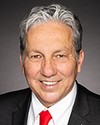Thank you for the invitation, Mr. Chair.
I informed the clerk yesterday that my presentation might exceed 10 minutes, if that's not too much trouble. Still, I'll try to be as brief as possible.
My presentation will be in French and will cover seven points. However, I can answer questions in both official languages.
The first point is that language is only as strong as the society that supports it. I say that to show that the government can really do something to support minorities. I have been studying francophone minorities for over 40 years now, and I have been the director of the Canadian Institute for Research on Linguistic Minorities. I am currently retired. The subject that your committee is studying is very important. I will be pleased to share with you some aspects related to these issues.
Let's go back to the first point, namely, the fact that language is only as strong as the society that supports it. I'm talking here about players. There are three main categories of players who can really act on the language. The first is members of the linguistic community themselves. In this case, the demographic does a lot. The number, the proportion, the territorial concentration, the family structure—whether it is endogamous or exogamous—migration and immigration are determining factors. Generally, the lower the concentration, the stronger the exogamy. Exogamy is what we call mixed marriage.
If you look at the sociological literature in this regard, you'll find that the normal tendency is to consider exogamy as one of the best sociological indicators of the full integration of ethnic groups into the dominant society. What I want to try to show you is that Canadian francophonie is an exception to this rule, or that it is at least very resistant to this strong trend. I will come back to this later. The role of this first category of players—the members of the linguistic community—is to pass the mother tongue on to the next generation, which I call “primary language socialization”.
The second category of players concerns the institutions that the linguistic minority may have. This is called “institutional completeness”, a term proposed to us by Raymond Breton, an Ontario researcher. The role of the institutions is to enable the presence of the use of language in the public sphere. If there were no institutions, we would only speak a language to play cards on Saturday nights with friends. In this case, the main player is civil society, which includes those who run the institutions and all the organizations that work on promoting language, culture, governance and so on. Often, civil society exercises leadership over community members.
However, research shows that there are two major distinct categories of institutions. The first allows an extension of primary socialization, meaning that it gives real socialization to the language. I'm talking about schools, the media and the language of work. I am less sure about the language of work because I haven't studied it as much. However, these are aspects that have an impact on people's identity.
The second category of institutions increases the status of the language. This is what I call secondary socialization. The effect is on the perception of the minority group's status and vitality. These include public services in the minority language, commercial and public signage, and all the services that a government may provide. Socialization isn't continuous. These are supplementary services that give a very powerful message about the group's vitality.
One point I want to emphasize is that school is the foundation of institutional completeness and civil society. In this sense, it is the most important institution. It is also very important with respect to identity transmission. Research shows that it is as important as family and social networks.
The third and final category of players is the government and, of course, the citizens who can support the government in its policies. The government's role is to offer legitimacy to linguistic groups. A government can therefore officially recognize language, institute individual and collective language rights, implement language policies—sometimes referred to as recognition policies—and offer services in the minority language. These are all things the government can do. Active offer is very important for the minority group because of their psychology, what some researchers have called status insecurity.
The perception that their language is recognized and legitimized by the state is fundamental to minority communities. It's a bit like a right to exist. The interaction between these three categories of players shapes the image that the group has of itself and influences its projects as a group. In sociology, we call this “collective identity”. When one component weakens, it weakens the others.
This can be the beginning of a vicious circle that leads to linguistic assimilation. The literature often talks about language revitalization. A combination of positive actions that engage all three categories of players—often under the leadership of civil society and even the government—can create a virtuous circle and growth of vitality.
The second aspect that I will now address touches on the Canadian francophonie outside Quebec. Very quickly, I would say that there are strong trends, including a decreasing proportion of the francophone population and a declining rate of French linguistic attraction. Some researchers speak of a gravitational effect of English on all other languages in the world.
In Canada, francophones live close to the epicentre of this gravitational force. The rate of linguistic attraction—what Statistics Canada calls the “linguistic continuity rate”—is positive if more people speak a language more often at home than there are people with that language as their mother tongue. Among francophones outside Quebec, the rate is negative, meaning less than one. The ratio was 0.61 in 2011, which means that barely 60% of all those who can speak French, compared to those who have it as their mother tongue, do so. However, among anglophones in Quebec—and this is a fine example of the attraction of English—because of the strong attraction of English in North America and not necessarily in Quebec, and despite the strength of French in Quebec, the rate is positive and relatively high. It is 1.29. So in Quebec, 30% more people use English more often at home than there are English speakers with English as their mother tongue.
In addition, there is a third trend that is a weak contribution of francophone immigration and a clear preference of allophones outside Quebec for English. Outside Quebec, the language shifts of allophones are 98% to English.
Another trend is the growing rate of exogamy. At the last census in 2011—because the results for 2016 are not yet available—67% of the children of parents entitled to education in French under paragraph 23(1)(a)—this is the only data we have—came from exogamous parents.
In addition, there is low transmission of the mother tongue associated with exogamy. If both parents are francophone, the French mother tongue transmitted is 91%. If the francophone parent lives in an exogamous situation, it drops to 29%. I do want to make an important point in that regard. Despite this disappointing result that I've just mentioned—as I said earlier, francophones are an exception to the rule—we see that the transmission of French as a mother tongue with francophone exogamous parents has been growing since 1971. The situation has already been considerably worse. For example, between 1991 and 2011, French mother-to-child transmission in an exogamous situation increased from 23% to 39%, a 69% increase in 20 years. For French-speaking fathers, it rose from 10% to 19%, an increase of 90%.
French-language schools could therefore contribute a great deal to this growth, especially if recruitment was increased—and I will come back to the subject soon—and offered services from early childhood.
I will now move on to other trends.
We are seeing a low attendance rate for French-language schools. According to the post-census survey, which Mr. Corbeil mentioned earlier, 88% of children with endogamous parents attended French-language schools, and that drops to 34% for children with exogamous parents. This gives an attendance rate close to 50%, but it is not known if that includes the total population of eligible children. It is therefore difficult to ensure that the rate is really 50%. However, according to the statistics presented, it is 55% at the primary level, 44% at the secondary level and decreases to 40% at the post-secondary level.
One of our studies showed that 64% of Grade 12 students enrolled in French-language schools planned to pursue post-secondary education in French. It is important to keep in mind that among the 50% of students who attend English-language school, 31% are enrolled in a French immersion program—we have to wonder if they know the difference—and that 41% of the parents of these children would have preferred the French-language school. This means that we are still far from meeting the needs. In addition, the population is aging and there is an exodus from rural areas and strong urbanization. I will stop there on major trends. It was simply to give a quick picture of the situation.
Here is the third aspect. The main challenge facing francophone communities outside Quebec is the early childhood sector and the recruitment of its school population. This was very well understood by Stéphane Dion—whom you know well—in the first Action Plan for Official Languages, in 2003. In my opinion, as a researcher and someone who works in the francophonie, it is the best Action Plan for Official Languages that has been produced. This plan aimed to recruit 80% of children of rights holders.
The current government's objective is not clear. Besides, we don't even know if it has an objective. However, the objective in the first Action Plan for Official Languages in 2003 was to recruit 80%. So we were ready to work on that. The importance of the early childhood challenge is also reflected in the 2016 report of the Commissioner of Official Languages, entitled “Early Childhood: A Vitality of Francophone Minority Communities”. It even recommends the practice of raising awareness among rights holders.
Exogamy remains a challenge for the transmission of the French language, but demographically—and people don't always think of it—it also has a hidden potential. Theoretically, the number of children of rights holders doubles with exogamy. Just compare 100% exogamy to 100% endogamy. If the two groups have the same number of children, there will be twice as many children of rights holders. There is a positive aspect to that in terms of demographics, but as far as the recognition of the French language is concerned, it is also a challenge.
A large percentage of francophone parents are anglicized before forming an English-speaking couple, as Jean-Pierre Corbeil's research has shown. However, it is not known to what extent these “rights holder” parents may wish to re-establish contact with the French-speaking community by enrolling their children in French-language schools, especially if they are aware of their rights. A study I conducted on Prince Edward Island revealed that, for up to two-thirds of parents who could have attended French school, it was because their grandparents were Francophone. So, when they knew that it was a right that was passed down from generation to generation, several of them chose the French school.
There is also a need for awareness among rights holders. I call it “social marketing”. No school curriculum in Canada produces better bilingualism in children than French-language schools. I'll say it again. No school curriculum ...









